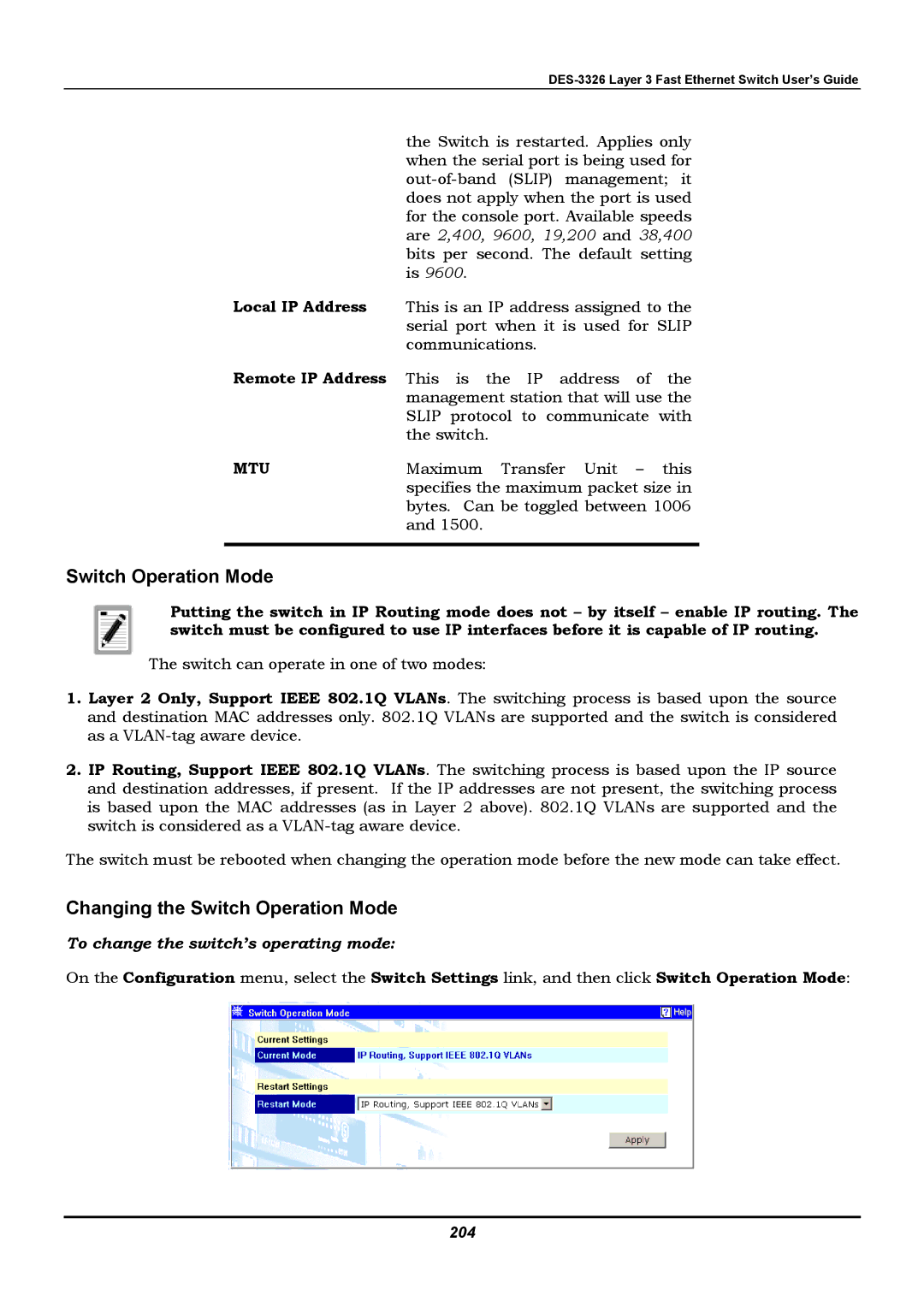
| the Switch is restarted. Applies only |
| when the serial port is being used for |
| |
| does not apply when the port is used |
| for the console port. Available speeds |
| are 2,400, 9600, 19,200 and 38,400 |
| bits per second. The default setting |
| is 9600. |
Local IP Address | This is an IP address assigned to the |
| serial port when it is used for SLIP |
| communications. |
Remote IP Address | This is the IP address of the |
| management station that will use the |
| SLIP protocol to communicate with |
| the switch. |
MTU | Maximum Transfer Unit – this |
| specifies the maximum packet size in |
| bytes. Can be toggled between 1006 |
| and 1500. |
|
|
Switch Operation Mode
Putting the switch in IP Routing mode does not – by itself – enable IP routing. The switch must be configured to use IP interfaces before it is capable of IP routing.
The switch can operate in one of two modes:
1.Layer 2 Only, Support IEEE 802.1Q VLANs. The switching process is based upon the source and destination MAC addresses only. 802.1Q VLANs are supported and the switch is considered as a
2.IP Routing, Support IEEE 802.1Q VLANs. The switching process is based upon the IP source and destination addresses, if present. If the IP addresses are not present, the switching process is based upon the MAC addresses (as in Layer 2 above). 802.1Q VLANs are supported and the switch is considered as a
The switch must be rebooted when changing the operation mode before the new mode can take effect.
Changing the Switch Operation Mode
To change the switch’s operating mode:
On the Configuration menu, select the Switch Settings link, and then click Switch Operation Mode:
